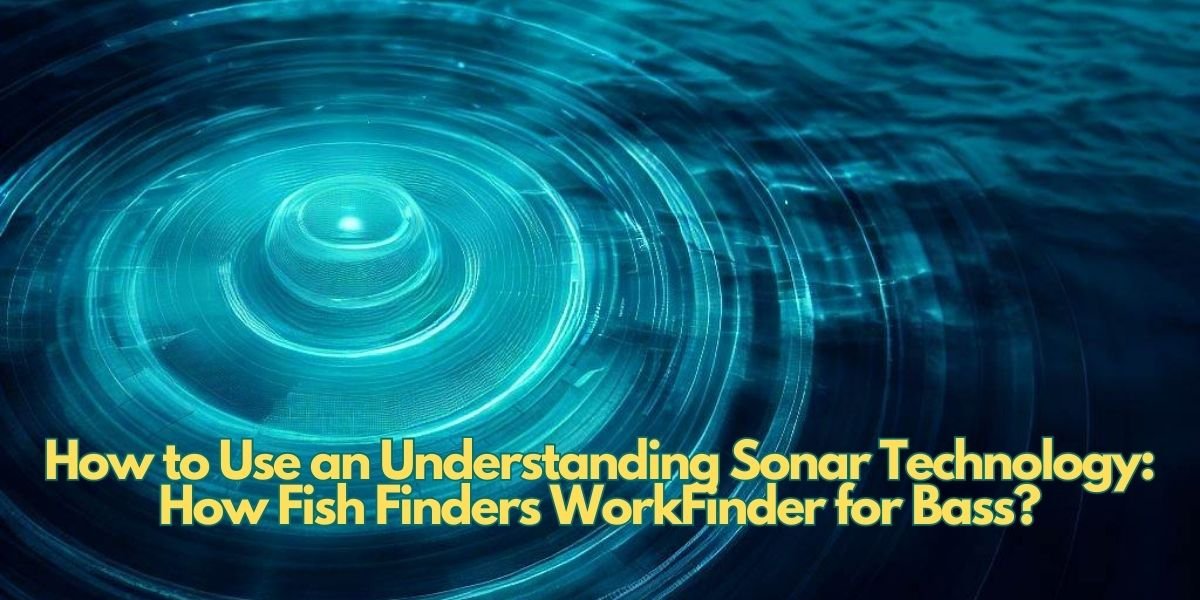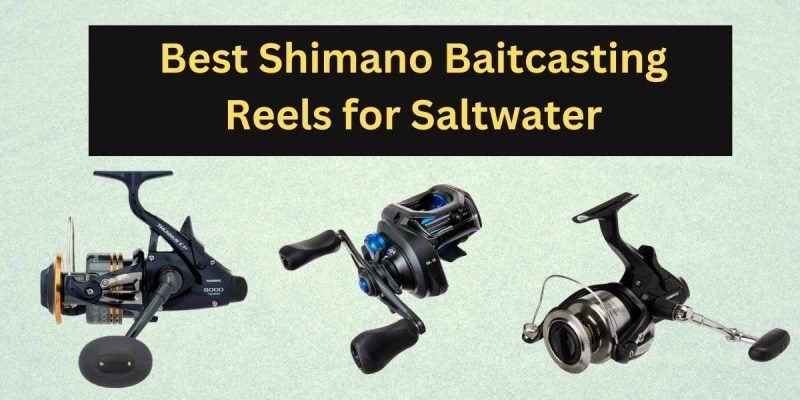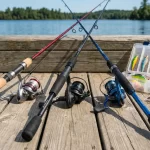Sonar technology has revolutionized the way we explore and understand the underwater world. Whether you are an avid angler or have a curious mind, understanding how fish finders work is relevant and incredibly useful for any water enthusiast.
This article will delve into the fascinating world of sonar technology, unlocking the secrets behind these powerful devices and uncovering the science that makes them so effective.
So, if you’ve ever wondered how fish finders guide fishermen to the perfect catch or how they enable scientists to explore the ocean’s depths, keep reading as we demystify the inner workings of this incredible technology.
Table of contents
Sonar Principle: How Does Sonar Work?
Sonar technology has truly revolutionized our understanding of the underwater world. But have you ever wondered how it works? Let’s delve into the fascinating principles behind sonar and discover the magic it brings to our lives.
When an object emits sound waves underwater, those waves travel through the water at approximately 1,500 meters per second. These waves bounce off various objects in the water, creating echoes that eventually return to the source. In the case of sonar, the source is typically a transducer, a device that emits and receives sound waves.
The transducer sends a high-frequency sound wave, often called a ping. As the ping reaches objects in the water, it bounces back to the transducer as an echo. By measuring the time it takes for the echo to return, sonar devices can calculate the distance to the object.
This information is then translated into useful data, such as the depth of the water and the presence of fish. Understanding this sonar principle helps us appreciate the remarkable technology behind fish finders and how they enable us to explore the underwater world like never before.
By utilizing the principle of sound wave reflection, sonar technology allows us to understand the underwater world better. By emitting sound waves that bounce off objects and measuring the time it takes for the echoes to return, sonar devices provide valuable insights into the underwater environment.
Through fish finders, we can marvel at the wonders of marine life and immerse ourselves in the beauty of our natural world. So next time you go fishing or explore the ocean, remember the incredible power of sonar technology and the secrets it reveals beneath the surface.
See also: How to Use a Fish Finder for Bass
Components of a Sonar System
Sonar technology has revolutionized the way we explore and understand the underwater world. One essential aspect of this technology is the components of a sonar system. These components work together seamlessly to provide fishermen and researchers with valuable information about the underwater terrain and the creatures that inhabit it.
A key component of a sonar system is the transducer. This device serves as both a transmitter and a receiver of sound waves. It converts electrical energy into sound waves and then when the sound waves bounce back after hitting an object, it converts them back into electrical energy. This allows the system to detect and interpret the return signals, clearly showing what lies beneath the surface.
Another crucial component is the display unit. This is where the information collected by the transducer is presented to the user. Fish finders typically have a colorful screen showing the underwater objects’ depth, temperature, and location. This visual representation allows anglers to identify schools of fish, determine the depth at which they swim, and even distinguish between different types of fish.
Lastly, the power supply is an essential part of any sonar system. It provides the necessary energy to operate the transducer and display unit. Depending on the size and complexity of the system, the power supply can be a small battery for portable fish finders or a larger electrical connection for more advanced research-grade sonar systems.
The first step to understanding how fish finders function is understanding the components of sonar systems. With its transducer, display unit, and power supply, this technology enables us to explore and appreciate the mysteries beneath the water’s surface. So next time you’re fishing or diving, remember the amazing technology that allows you to see what’s going on underwater.
Components of a Fish Finder: Transducer, Fish Alarm, and More
Fish finders are incredible tools that have revolutionized the way we fish. Understanding the components of a fish finder is crucial to unlocking its full potential. One of the most important components is the transducer. This device sends sound waves into the water, which bounce back and provide detailed information about the underwater landscape and any fish present.
Another key component of a fish finder is the fish alarm. This feature alerts you when fish are nearby, making it easier to know when to cast your line. It gives you that extra advantage and excitement of knowing you are in the right place at the right time.
In addition to the transducer and fish alarm, fish finders often come with other useful features. Some models have GPS built-in, allowing you to mark your favorite fishing spots and track your movements on the water. Others display color, making distinguishing between underwater structures and fish targets easier.
Understanding how fish finders work can enhance your fishing experience and increase your chances of success. With the right knowledge, you can decide where to fish, how to approach different areas, and when to cast your line.
So next time you head out to the water, ensure your fish finder is ready and take advantage of the incredible technology at your fingertips. Happy fishing!
How is Sonar Technology Used in Fish Finders?
Sonar technology has revolutionized the way we explore and understand the underwater world. Fish finders, in particular, have become essential for fishermen, making their fishing trips more efficient and fruitful.
Using sound waves, these devices send out a signal that bounces off objects in the water and returns to the fish finder, providing valuable information about the underwater environment.
One of the key components of fish finders is the transducer. This small yet powerful device emits sound waves and detects the echoes as they bounce back. By analyzing the strength and timing of these echoes, fish finders can determine the depth, size, and location of fish and other objects, such as rocks and underwater vegetation. This information is then displayed on the fish finder’s screen, allowing fishermen to decide where to cast their lines.
Fish finders also come equipped with various features to enhance the fishing experience. Some models offer GPS capabilities, allowing anglers to mark their favorite fishing spots and navigate easily.
Others have advanced sonar technologies like CHIRP, which provides even clearer and more detailed images of the underwater world. With these advancements, fishermen can visualize the underwater terrain and fish with incredible precision.
The use of sonar technology has changed the way fishermen approach their craft in no uncertain terms. Fish finders have become invaluable tools, helping us understand and explore the underwater world better. These devices provide valuable information on fish location, size, and depth by utilizing sound waves and analyzing the resulting echoes.
Fishing has become more efficient and enjoyable with features like GPS and advanced sonar technologies. So, the next time you head out for a day of fishing, don’t forget to bring your trusty fish finder and let the power of sonar guide you to a successful catch!
Benefits of Using a Fish Finder: Avoiding Unwanted Areas & More
Fish-finding technology has come a long way in recent years, making it easier to reel in a big catch. One tool that has revolutionized the fishing industry is the fish finder. Not only does this nifty device help anglers locate fish in a vast body of water, but it also provides numerous other benefits.
One major advantage of using a fish finder is avoiding unwanted areas. No fisherman wants to waste their time in unproductive waters, and a fish finder can help them steer clear of such spots. By displaying a detailed image of the underwater terrain, including depths and structures, fish finders allow fishermen to identify areas where fish are more likely to congregate. This saves time and effort and increases the chances of a successful fishing trip.
Another benefit of fish finders is the valuable information they provide about underwater conditions. They allow anglers to see schools of fish lurking beneath the surface and their size and depth.
This data helps fishermen make informed decisions about their fishing strategy and equipment, leading to a higher chance of success. Additionally, some fish finders can even measure water temperature, which is crucial in determining the feeding patterns of various fish species.
Furthermore, fish finders are user-friendly and accessible to all. Modern technological advancements have made these devices more affordable and easier to operate. Their intuitive interface and clear display allow even novice anglers to grasp how they work quickly.
This means that anyone can take advantage of the benefits fish finders offer, regardless of their experience level, making fishing an enjoyable pastime for all. So, to level up your fishing game, consider investing in a fish finder and discover the wonders it can bring to your angling adventure.
Conclusion
It is by exploring the intricate realm of sonar technology, specifically the operation of fish finders, that we can gain a deeper appreciation for the dynamic world beneath the surface of the sea.
As we unravel the secrets of this remarkable technology, we gain a deeper knowledge of our aquatic ecosystem and equip ourselves with a powerful tool to enhance our fishing expeditions. Visualizing the underwater terrain, locating fish, and improving our chances of a successful catch is invaluable for any angler.
So, let us embrace the wonders of sonar technology, diving headfirst into its depths and unlocking a wealth of possibilities beneath the shimmering waves. In doing so, we embark on a journey that challenges our understanding of the natural world and enriches our experiences as enthusiasts of the great outdoors.
You may also like 📖
-
10 Best Spinning Reel for Trout in 2023 (Buying Guide Review)
-
10 Best Saltwater Spinning Reels Under $100 – Ultimate Guide
-
10 Best River Trout Fishing Rods For 2023 Season: Expert Buying Guide
-
Can Baitcasters Improve Casting Accuracy More Than Spinning Rods?
-
What Length Spinning Rods Do You Need: (Finding the Perfect Fit)
-
How to Spool a Spinning Reel Like a Pro – Conquer Line Twist and Cast Like a Champion







